| Columns Retired Columns & Blogs |
you know I am jealous - right?
hr

At the end of that bit, I invited readers to send in their own such stories, and I'm happy to say that the response was the most extraordinary I've seen since the days of Listener magazine (1995–2003). This outpouring wasn't just the largest volume of mail I've ever received in response to a Stereophile piece—although it was that—but also the most heartfelt and overwhelmingly positive. (Only one reader had a negative reply, and even that was from a frequent and reliably good-natured correspondent who expressed annoyance that I drew attention to the out-of-tune instruments on so many recordings by itinerant country blues musicians. Fair enough.) Literally dozens of readers had worthwhile things to say; here is a small sampling of my favorite responses:

I was a radio announcer at the University of New Mexico's KUNM in Albuquerque in the early '70s. Like you, I thought Fahey's music had a sound akin to cotton field, cigar-box, funerary blues, and lacked much, if any, technical glamor.
John Fahey came to a small side venue at the university's Popejoy Hall around that time. I found him to be nervous, temperamental, and generally unfocused during his mesmerizing, nearly two-hour performance. He was sipping from two 16oz cans of 7 UP and who-knows-how-many cigarettes. After a few pieces, some of them from Blind Joe Death and others that he seemed to be still in the process of working out, he mused aloud that recording artists like Leo Kottke and Robbie Basho (on his own Takoma label) were colleagues of a sort. Nevertheless, he drew a sharp and memorable distinction between his playing and Leo Kottke's, saying, "Leo Kottke is a better technician, but I'm a better writer." Why he said that, I didn't grasp at the time, but I couldn't help but remember the statement as significant to explaining the sentiment that you expressed in your article, and which I found fascinating.
I'm hardly a credentialed audiophile, but I could hear strains of Fahey in the music of both Kottke and Basho, and generally preferred Kottke and Basho when first introduced to the recordings of these two men. It was impossible to avoid comparing the skill sets, or the now-hard-to-ignore raw, enigmatic passion of Fahey compositions when dissected side-by-side with the technically astonishing guitar work of Leo Kottke. In my mind, I hear John Fahey as a busker on a parched Southern California sidewalk and Kottke as a virtuoso concert performer in a large music hall.—Jim Wellborn
Beginning in 1967 (when I was 27), I gradually acquired nine Fahey albums, starting with Blind Joe Death, which is Vol.1 of the Takoma 1967 reissue. I also have Vols.2, 3, and 6, as well as a Christmas album with no date of issue. My last acquisition was of a 180gm vinyl LP with no date or label (a bootleg, I assume), entitled Poor Pilgrim's Work, based on an enclosed reprint of an "historical" brochure.
I still do not know what drew me to Fahey, especially as I was still playing records on a no-name system in the late 1960s. By the early '70s, I had a "proper" playback system (Heathkit AR-1500 receiver, AR turntable, and Large Advent speakers). But by then, the Fahey bloom was starting to fade. Perhaps, in the beginning, I was captivated by something just beyond my grasp. Today, the grasp is not so hard, but I don't seem to find as much "there" there. Or maybe my emotional hot buttons have simply changed.
I realize these comments are the reverse of what you asked for, but maybe they provide grist for the mill if not food for thought. Keep up the good work, though you do sometimes wear me out with your rehabs and reconstructions!—Michael Bruer
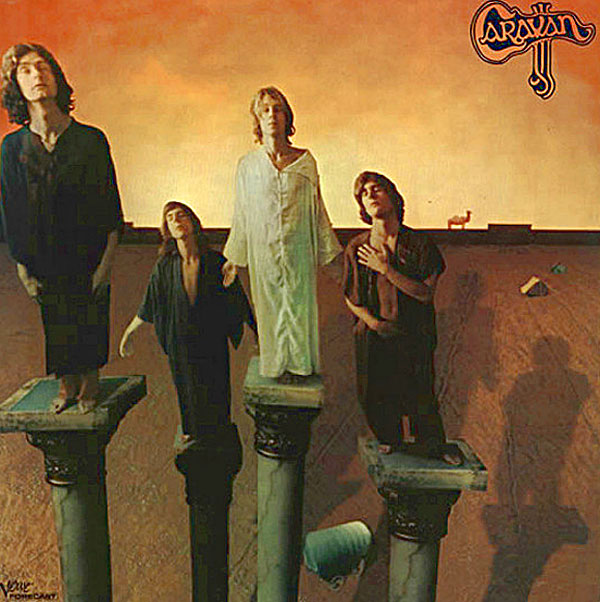
In the late '60s, I had the good fortune to (sorta) attend Fairfax high school in Los Angeles. Directly across Melrose Blvd. was a new, small record shop called Aron's Records. Behind the counter more often than not was the owner, Manny Aron. I passed far too much time with Manny, as he was generous with both his time and his thoughts.
After cruising the new arrivals section (which was frequently filled with promo records dropped off by the local reps), I'd ask Manny's opinion of the new Byrds, Buffalo Springfield, Doors, etc., albums. He'd likely steer me in the right direction. On occasion he'd make a suggestion, and one day he put the first Caravan album in my hand. I didn't like the looks of it, the vibes weren't right, and I handed it back to him. He told me to take it home and listen to it, and not wanting to annoy him, I did so. That evening I gave it a listen and confirmed everything that I felt about it—too weird—and brought it back to the store. Manny wouldn't take it back until I took it home and listened to it again. I had plans for the $2 tied up in that record but reluctantly gave it another shot; I liked it even less. It was progressive, bombastic, and much too British, so I brought it back to the store again, and again Manny refused to put it back into stock, telling me that I needed to keep listening to it until I heard it.
That record remained, unheard, in my record collection forever. Finally, other record stores opened, and I was able to trade it in for something, anything, and be done with it.
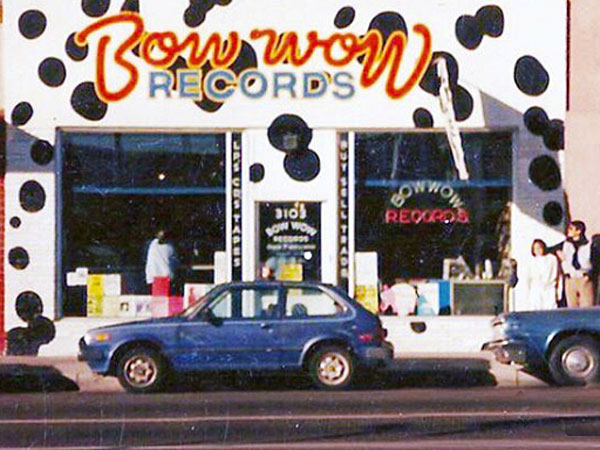
Jump forward 15 years, and I was now the owner of Bow Wow Records, in Albuquerque, New Mexico (footnote 1). The kind of interchange that I had had with Manny was now part of my every day. I made suggestions, some of which were accepted willingly, others coming back later as used LPs.
One day, for reasons unknown, something in the back of my head made me think about that Caravan album, long out of print. I began searching for it in stores and record shows. By then it had moved to the top of my "want list," but I couldn't find it anywhere. One day, at a local record show, going from vendor to vendor, asking for the first Caravan record, I found not one copy but two! Bought them both, took them home and excitedly put one on the turntable. As I sat there my mind wandered back to those high school days, but, more importantly, as I listened, I heard what it was that Manny wanted me to hear. For those who don't know that album, search it out and discover a foundational record in the Canterbury tradition. Rejoice to the melodies, the harmonies, the inventiveness and creativity of a group at the forefront of a new musical scene.
The first Caravan record is a masterpiece, and I have a visceral response whenever I hear it. Hell, just writing about it makes me a bit misty-eyed.
There are times when a small thing can have a profound effect. Thank you, Manny: Aron's records has shaped my life.—Andrew Horwitz
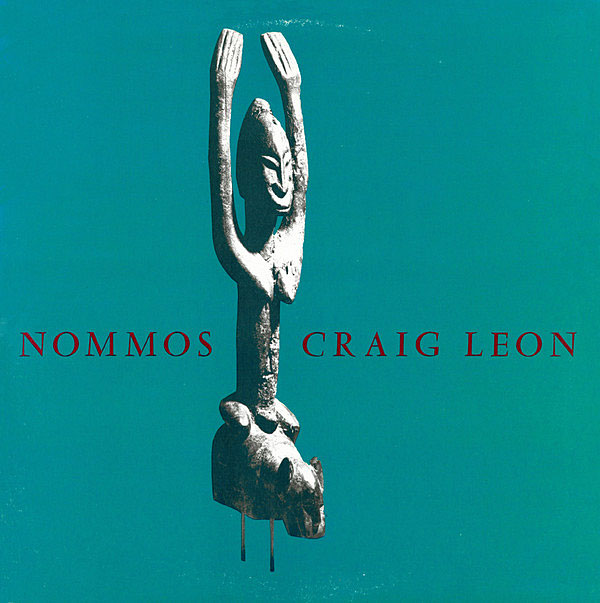
I was taking in my Sony T-3000 to be serviced when my tech gave me this month's issue of Stereophile and pointed out the John Fahey piece. He mentioned this because I wrote a biography on him, Dance of Death—The Life of John Fahey, American Guitarist (Chicago Review Press, hardcover 2014, paperback 2018). I'm glad you came around to Fahey's music, and it's somewhat understandable
if you started with VOT, as it's really a hodgepodge of various recording left-overs and jokes. The most fascinating part of that album is the liner notes and 20-page booklet with his bizarre, semiautobiographical ramblings. Fahey (and I) would consider America or Fare Forward Voyagers to be his finest recorded performances, but I greatly enjoy all his early records. Still looking for a copy of the original Blind Joe Death. I did manage to find an original Dance of Death that he pressed 300 copies of in 1964. Perhaps one day I'll find that holy grail.
As for your question regarding music I hated when younger and grew to appreciate: Oddly enough, growing up in the 1990s, I really disliked the Ramones. As a wannabe pseudo-intellectual teen who was reading Beat poetry and listening to My Bloody Valentine and ambient techno (admittedly an odd combo in retrospect), I found the Ramones to be sophomoric and uninteresting musically. Somewhere post-college, I heard their cover of "Do You Wanna Dance," and I heard an ennui that had never registered to me in their music. "I Wanna Be Your Boyfriend" had a similar longing, and it drew me into the subtlety of all their music, not to mention the fantastic recordings. It was after watching the Ramones documentary End of the Century that I can understand the pathos and suffering in Joey's ballads. While still sophomoric at times, they had a remarkably varied emotional range for a group who essentially made the same record their whole career. Fun fact to tie it together: The first Ramones album was recorded by Craig Leon, who at the time was best known for recording orchestras for classical recordings, and Leon ended up recording a solo LP of electronic music for Fahey's Takoma label in 1981. The album is called Nommos and is fantastic. It was recently reissued by the RVNG label out of NYC.—Steve Lowenthal
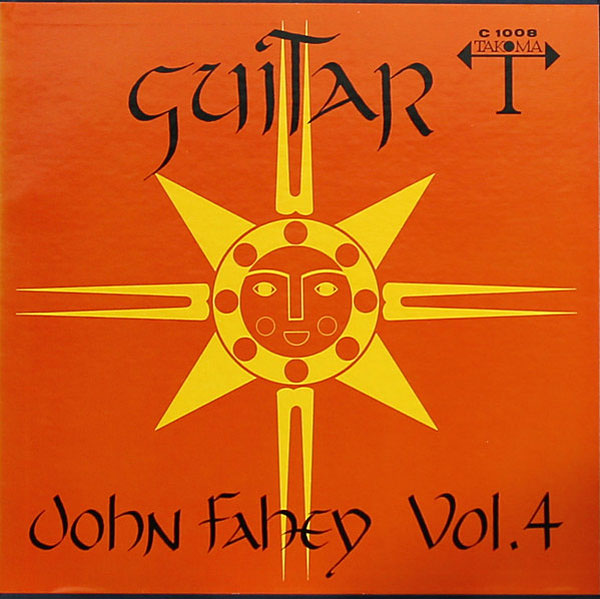
After I read the sentence in Listening #205 (w.r.t. Fahey): "Or did he consciously invent punk folk decades before the emergence of punk rock?," I punched the air twice and shouted, "Yes!"
I keep telling this to people who pretend to be interested—I don't think Fahey is a household name anywhere on the globe, and it's definitely not the case here in Hungary—that for me Fahey was the first true punk. He learned the rules very well then discarded or adapted them, thereby pushing the boundaries of the art. He experimented with and juxtaposed stuff that must have seemed downright crazy at the time and still does not sound dated. Folk and turntablism (as in recordings played backwards) on Vol. 4/The Great San Bernardino Birthday Party field recordings, different tuning systems, inspiration from Indian classical music and Bart¢k, etc. (Fahey was a huge Bart¢k fan.)
As for tuning specifically, I believe he is always in tune, albeit sometimes it's in an unusual one. Unfortunately, I lack the musical knowledge to properly explain what's going on, but there's a comprehensive list of the tunings that he used. For you, as a guitar player, hopefully it will be informative.
Plus, Fahey being an avid record collector, his contribution to studying and preserving early blues is invaluable. I find it an interesting and fascinating coincidence that Bart¢k played a very similar role with Hungarian folk music.
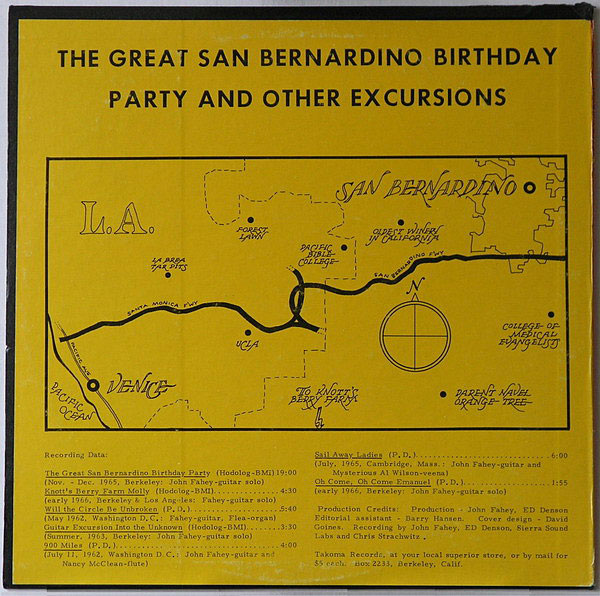
I honestly think that Fahey was one of the greatest American composers/musicians of the 20th century. And it breaks my heart that the quality of some of the reissues is a total disservice to his art. Are you happy with your copy in terms of sound and manufacturing quality?
Ok, I'll stop gushing over Fahey and answer the question that you actually addressed to your readers. The music I really hated as a kid was electro/synth-based pop music, Kraftwerk and the like. I grew up in a socialist model town with lots of gray concrete buildings, and that music somehow telegraphed the picture of a hopeless, rainy November morning when the gray concrete is even grayer. In other words, it made me depressed.
Today, the first word that comes to mind when I think about Kraftwerk is "funk," and I find their techno-optimism heartwarmingly innocent.—Dexler Poppe

you know I am jealous - right?
hr

IMO it's just a different representation.
Has its time and place. Sometimes it captures the art better.

Mono e mono :-) .....

Hi
When I was a small kid, AM/SW radio was the only entertainment available at home when TV was still nowhere.
Yet today, monaural music still can't kick in as it still can't touch stereo music in bringing back home live performance.
Every single LP is stereo recording out of my 1,000+ vinyl collection.
Sorry, no no monaural !
Listening is believing
Jack L

Chrome won't let me visit the importers webpage, it crashes with a security error. And the phone number? Either they don't answer or you get a fax dial-tone. I'm afraid this is one piece of exotic imported goods it's best to avoid.

Remember the days of chatting about amps in price per pound rather than dollars per watt?
This speaker reminded me of that!
5.5 pounds per speaker, $3350 per pair.
1675 bucks per 5.5 pounds = 304 dollars per pound.
The Wilson Alexx speakers weigh 452 pounds each, cost 109,000 dollars per pair...only 120 dollars per pound.
Perhaps the Wilsons are a relative bargain.
Golden Ear Triton reference is 10K per pair, 108 pounds each. Only 46 dollars per pound.
All this is apropos of nothing.

Could you calculate the Wilson XVX price per pound, please ....... XVX may be the best bargain in the world ....... While you are at it, may be you could also calculate the Wilson Master Chronosonic ....... That one may be the the best value in the entire universe (at least the universe we live in ) :-) .......

Maybe you can find the best pound for pound speakers!

Dayton Audio B652, reviewed by Stereophile ....... Weighs about 6 pounds and costs about $40/pair ....... So, less than $7 per pound ........ Well wait ...... Each speaker costs $20 ........ So, less than $4 per pound :-) .......

Hi
"Best sound" to whom? To you maybe best sound but to someone else could be only so so. One man's meat can be another's poison.
Best sound for the worst dollars I would suggest Audio Note of Japan "Kegon" 17W+17W stereo power amp sold for USD$125,000 on sale 10 years back. I auditioned it & I love its sound - so elegant so engaging (using 300B filament-direct-heated triode power tubesx4) though I hated its price.
Listening is believing
Jack L

Both Stereophile reviewers of those Dayton Audio speakers, liked their sound :-) ........

Oh BTW ........ You could buy the VAC Statement amps, reviewed by Stereophile ...... VACs can put out more power :-) ........

If they haven’t already, Fahey aficionados should do themselves a favor and have a listen to Jim O’Rourke’s Bad Timing (1997) and The Visitor (2009), both on Drag City records. (n.b. IIRC neither is available on streaming, but can be had on FLAC from the aforementioned label for a very reasonable price). I believe that Bad Timing in particular was instrumental (heh) in introducing Fahey’s sidelong blues to a new generation of players and listeners like myself.

Wouldn't it be wonderful to have a place where all those Magical little Loudspeakers could be compared, loved, admired, examined and purchased.
I had just that place at my Esoteric Audio in Farmington Hills. We kept nicely broken-in Quad 63s, LS3/5a, Pro-Ac Tablettes, Linn Kann, Spica TC-50, Kindel 50s & 100s, Celestian SL6 & SL600s, along with guest Loudspeakers up for Evaluation using our VPI Table, Koetsu Rosewood, Electrocompaniet or Conrad Johnson or Audible Illusion with MIT cable interfaces. 1985 a wonderful time for music gear explorations.
There should be a special place in Stereophile for outstanding products that changed everything in the hobby. The LS3/5s should be enshrined into that HALL of FAME.
Tony in Venice

... between the late 1990s and 2019, how then can there have been reviews of the Rogers LS3/5a 65th Anniversary Edition in 2015?
https://www.stereo.net.au/reviews/rogers-ls3-5a-65th-anniversary-edition-loudspeakers
https://6moons.com/audioreviews2/rogers/1.html
Then there's this Rogers LS3/5a review from back in 2008:
https://www.hifinews.com/content/rogers-ls35a-%C2%A31495

Moving to an urban area could cause 'amnesia' :-) .......

I'm willing to accept that these sound good in some weird, special kind of way, since Stereophile reviewers love them. But...I don't get it. There's that upper-bass bump, that mid-range bump, and that rising treble...why doesn't anyone try to improve them, rather than reproducing all these flaws? How about a slightly larger version with better bass extension...and flatter response? Wouldn't that sound even better? I guess I just don't get it.

... the LS3/5a, then get the Harbeth P3ESR.
https://www.harbeth.co.uk/hifi-speaker/11/Harbeth-P3ESR-loudspeaker
As HR said, the "Harbeth's P3ESR 40th Anniversary Edition is the best-built, most natural-sounding small speaker I have ever heard."
https://www.stereophile.com/content/harbeth-p3esr-40th-anniversary-edition-loudspeaker

Those BBC loudspeaker designs are licensed to manufacturers that are NOT allowed to alter or variant. Your Spendor LS3/5a will sound identical to the Rogers, Chartwell or any other maker.
The Linn Kann & Pro-Ac Tablette variants are civilian purpose "improved" versions of the BBC design.
Tony in Venice

... presently in production are using drivers from KEF, so in that regard they all represent only an approximation to the original design.
At one time, the BBC furnished to its licensees a calibrated reference speaker against which the performance of all production units was to be verified. Is that still being done?

I have no experience with these NEW drivers so this Review Sample has to serve as the important reference as to any probable performance differentials.
I anticipate only slight differences.
Didn't the reviewer contact BBC, like we'd hope he would, to discover important background details. ?
Still, we'll find out soon enough as various folks owning a "vintage" pair will write about their experiences.
Tony in Venice

Tony, these speakers do not sound identical.
I had the Stirling LS3/5a v2, the Graham LS3/5a, and Chartwell LS3/5 in my home for a fun test last summer; close family, yes, but not identical triplets.
Art reviewed pretty much the same models (in January, I believe), and I agree with his findings and almost his preference (I bought the 3/5 due to its "voice-tone" (for our TV)). One could say their differences lie mostly in the field of being transparent to source rather than transcendent to sauce - they all really "got it" in spades.
I don't think the Harbeth P3ESR is BBC-licensed, but I suspect it would qualify, if Harbeth wanted to subscribe.

Those versions you had might've been able to be bench adjusted to have nearly identical performance, presuming that drifting or tolerances were the factor in their variations in sound quality. "Back in the Day" tolerances of 10% +/- were rather common with Manufacturers building to spec. rather than to Anechoic Chamber measurements.
I recall the LS3/5a as a breakthrough Loudspeaker Design that paved the way for further developments.
When I first heard a pair in a London HiFi specialist Shop I was stunned that such wonderful performance ( especially vocal ) could be originating from those "tiny" little boxes. Phew !!! I had to buy them on the spot. Even today, civilians hearing recorded music thru LS3/5a can't believe it's all coming from those little boxes.
Does anyone know if the BBC Designs for Loudspeakers are still viable or in manufacturer?
Tony in Venice

Somebody said, BBC wanted the voice of Louis Armstrong to sound real :-) .........

Voices are what immediately captured me.
Opera Voices sounded more realistic than any Transducer System to date. ( 1980s )
My own Mother was an Opera performer, no transducer could fool me but the little BBC remains dam good with vocals.
Tony in Venice
ps. Armstrong was long gone by the time KEF developed that Driver

BBC might have used Louis Armstrong's voice recordings ........ BBC might have had some of his interview recordings and might have remembered, how he sounded ........ I think one of his last song recordings was for one of the James Bond movies which was released in 1969, 'On Her Majesty's Secret Service' :-) ........

BTW ..... That is the only James Bond film George Lazenby acted as the James Bond :-) ........

...of auditioning these in 1981, I have. To say that a loudspeaker is 'flawed' for not being full-range or for having insufficient bass extension is one thing, and one might look past these limitations (as most of us do without realising it by virtue of not having the necessary to purchase those models that are deficient in neither). The Ls35a, however, is simply not fit-for-purpose as a High-Fidelity loudspeaker unless employed in its strictest BBC-sense -- for listening to vocals and nothing else. Good for radio announcers, but not for Music.
That vivid memory? I had 'Faith', the new Cure LP with me when I was auditioning for new loudspeakers. I listened to the Rogers, some slate-ended JBEs, Linn Kans, Mission 770s, AR18s, and some others I now forget. First-up the LS35a (on Dealer-recommendation), the demo guy cued-up Track 1 ('The Holy Hour') with its 6-string bass intro -- and I laughed at their reproductive ineptitude. The level couldn't have been more than 70 db and their cones were bottoming immediately, hopelessly, and on every note with vast amounts of distortion. He couldn't believe it and was so embarrassed that he went through his entire stock that afternoon and I had the audition of a lifetime. I came away with one of those mentioned loudspeakers that I still use to this day. It was not the Ls35a.
Our definition of 'high-fidelity' cannot be so restrictive that a loudspeaker -- and a feted and pricey one at that -- can only be so-described with the most limited of programme material. But then 'high-fidelity' today is so often about 50s trumpeters/saxophonists and 'audiophile female vocals' that it's perhaps not too surprising that these pants-loudspeakers still get such praise.
That the Ls35a has "...gained a following for its suitability as a domestic loudspeaker" makes about as much sense as the existence of #BetterOnCassette until you realise the 'why' of adherence to both, and it has nothing to do with Fidelity.
It took me 6-weeks to get my record back from the dealer as they used this track in all their demos thereafter, and I was happy for them to keep it as we all learned something that day. Thank you (the late) 'Simply HiFi' (Hull, UK) for that experience 40 years ago -- I have never looked at a review of a sub-8" bass-driver or a ported cabinet with anything other than a chuckle since...

The $1,500/pair, Wharfedale Lintons (reviewed by Stereophile) may be a better value than the BBC LS3/5a ........ Linton has 8" bass/mid driver :-) .........

and with a blousey bass. I prefer a loudspeaker that doesn't make demands of the room it's in, so its acoustic suspension for me. I'd consider trading up to the Magico M5 if I got on with their treble and way-out-there for an Apogee Scintilla if I could ever hear them and they're that good, but otherwise I consider myself fortunate to have found my forever speaker when I was in my teens. That's where I'm staying :)

Which one is your 'forever' speaker? ........ May we know? ....... Just curious :-) ..........
Hi-Fi news recently reviewed the Magico A1, which is an acoustic suspension design ........ You may be interested in that speaker :-) .........

... only one of which has an 8" bass unit and is a sealed-box. You can find out easily enough but I won't say its name as I buy them when I find them to ensure an adequate number of driver spares. Part of the reason for its excellence is the crossover -- one component, with the bass driver connected directly to the amplifier -- an effectively 'active' passive speaker.
As for Magico, the A1 looks interesting but I could never justify new Magico prices (plus that $7500 price is £9.995 here after importation -- no way) -- €15k for a S/H M5 is a different matter though. Regarding Dirac, I'm vinyl and all-analogue so no-go.
cheers!

Some of the bass-reflex design speakers come with port blocking 'bungs', which can turn them into acoustic suspension design ........ I think those 'bungs' are also available from third party vendors which can fit multiple speaker models .......
The Magico A1 is priced at US$7,500/pair :-) .........

...plug the port on a bass reflex speaker and turn it into a correctly performing acoustic suspension speaker. There are very different requirements for both the woofer parameters and the enclosure size for BR vs AS. Those "bungs" are normally made of foam, which only partially block the port and are meant to reduce bass output in difficult rooms with bass peaks.

Agreed ...... Those 'bungs' are, like you said, band-aid approach for some few difficult rooms ....... Majority of the speakers made at the present time are bass-reflex designs ........ Like I mentioned, room compensation technology like the 'Dirac live' could help ........ Also, adding separate subwoofers could help ....... Many of the powered subwoofers come with some type of adjustable room compensation controls :-) ........

BTW, if you can use newer technologies like 'Dirac Live', you could modify the frequency response to suit your listening room ...... See, Stereophile review of NAD M10 with 'Dirac Live' :-) ........

... audition any of the acoustic-suspension speakers from ADS, such as the L520 (8" woofer) or the L620 (10" woofer)?
https://img.canuckaudiomart.com/uploads/large/1289112-ads-l520-loudspeakers.jpg
https://img.usaudiomart.com/uploads/large/816579-ads-l620-w-covers-stands.jpg

What was imported from the US at that time was limited relative to today, and that's too bad as these ADS designs -- completely new to me -- look to have much of worth. Those butyl surrounds sort the biggest problem with vintage AS speakers straight off the bat, but I don't see why these large-cab, 2-way, large-woofer designs have to have such complex, inductor-packed crossovers unless they're designed for free-space siting (and I'm not keen on fused tweeters when there's ferrofluid).
If only some bright-spark could make a butyl surround of the correct compliance to fit Ed Villchur's speakers...

NHT is another company which makes several models of acoustic suspension speakers ....... NHT speakers are reasonably priced :-) .......

... for the ADS L520 and/or L620?
I'd like to see just how complex and "inductor-packed" they might be.
Regarding fuse protection for the tweeters, ADS may have been wisely trying to proactively reduce their potential warranty costs. Given that these speakers sold for about $300-400/pr., it's not unlikely that they would be used with a receiver having a comparable price tag. Such units, 40-odd years ago, typically had a maximum power output in the range of 30-40W. Enthusiastic listeners might tend to regularly drive their amp into clipping, thus endangering the tweeters. The fuses would help protect the tweeters against failure and thus minimize the need for repairs while the warranty was still in effect.

https://www.ebay.com/itm/192189746736
I suppose it's only 'complex' relative to an AR18s, but I don't see why such a large cab/bass-unit combo should have such baffle-step problems as to require this much on the inductance front. There's an as-new pair on USA Audio Mart as I type...

Current MSRP for KEF LS50 is about $900 with discounts available. Or one can purchase a pair of LS3/5a copies for about $3k or a pair of original LS3/5a for about $1500. Which is the better value ? The LS50 delivers comparable imaging, extended treble, deeper bass, and can play louder. I know my answer. FYI- I own a pr of LS50 and a pr of c1980 15ohm LS3/5a.

... a pair of JR149 speakers and the matching Super Woofer?

...these were long ago (in the UK, at least) affected by the same price-craziness as the 35a, although why anyone would want a speaker that looks like a 1972 cigar case is beyond me!
I'm going back to the early 80s now, but do you know about the colossal stereo bass-bins that Rogers marketed with the LS35a for a while? This was matched to the LS specifically, so presumably would be ideal for those who must have that speaker's plus-points...

... might be interested in the JR149 speakers.
https://i.imgur.com/KNBtWsJ.png
A full copy can be downloaded from the link on this site:
https://www.audiosciencereview.com/forum/index.php?threads/popular-hi-fis-subjective-evaluation-of-30-speakers.12049/
Regarding the "colossal stereo bass-bins", are you referring to the Rogers Reference System that combined the LS3/5A with the L35B low frequency unit and the XA75 electronic crossover?

Apple HomePod, some Sonos models and even B&W Formation Duo are copies of JR149 design :-) ........

I don't know about JR149 but, JBL JR POP is on sale for $29.95 :-) .........

Small well balanced monitors have been the hidden gem in the JBL, Infinity and Revel lines for a generation now. I've long believed that at the end of the day the hi-fi press prefers a certain amount of coloration, especially through the mid-range, where ironically you'd want the least amount of distortion, coloration or frequency bump or suckout. And if it's British and cost 10 times the material sheet instead of 3-4 times, then it's likely brilliant! I've long considered AD my favorite reviewer, since being a Listener reader back 15 years now. His love for this speaker when so many British, American and Canadian firms were simply making much better speakers for much less money will always be a head scratcher for me. I just don't get it. RIP Art, we'll miss ya.

Small well balanced monitors have been the hidden gem in the JBL, Infinity and Revel lines for a generation now. I've long believed that at the end of the day the hi-fi press prefers a certain amount of coloration, especially through the mid-range, where ironically you'd want the least amount of distortion, coloration or frequency bump or suckout. And if it's British and cost 10 times the material sheet instead of 3-4 times, then it's likely brilliant! I've long considered AD my favorite reviewer, since being a Listener reader back 15 years now. His love for this speaker when so many British, American and Canadian firms were simply making much better speakers for much less money will always be a head scratcher for me. I just don't get it. RIP Art, we'll miss ya.